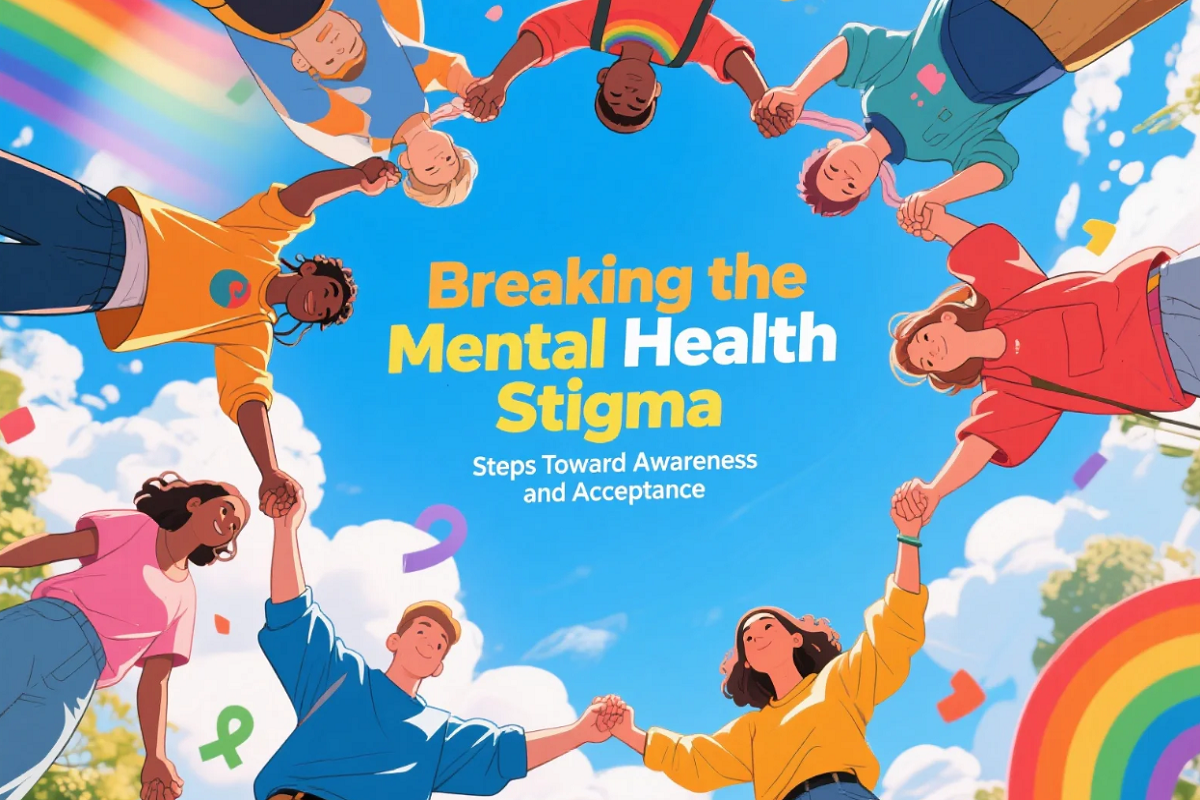Breaking the Mental Health Stigma: Steps Toward Awareness and Acceptance
-
28
- 22 Oct, 2025

Mental health is essential—it's time we give it the care and attention it truly deserves.
Imagine breaking your arm and being told to just "walk it off." Sounds absurd, right? Yet for millions of people struggling with mental health issues, that's often the response they get: silence, shame, or stigma.
For too long, society has misunderstood or ignored mental health challenges, making it difficult for individuals to seek help, speak up, or feel seen. But tides are shifting. Thanks to ongoing advocacy, education, and courageous conversations, we’re finally moving toward awareness and acceptance.
In this article, we’ll explore:
- What mental health stigma is and where it comes from
- How stigma affects individuals and communities
- Effective ways to raise mental health awareness
- Concrete actions to dismantle stigma and foster a culture of acceptance.
- Resources for education, support, and recovery
Whether you're someone navigating your own mental health journey or an ally seeking to make a difference, this guide provides real, actionable steps to support change.
What Is Mental Health Stigma?
Mental health stigma is the cloud of judgment, misunderstanding, and discrimination that shadows those living with mental health conditions, often silencing their voices and isolating their experiences. It frequently grows from roots of confusion, fear, and long-held cultural misconceptions.
There are two main types:
- Public stigma: Widespread societal discrimination that can result in exclusion, stereotypes, and loss of opportunities.
- Self-stigma: Internalized shame or guilt that causes people to feel unworthy, weak, or hopeless.
Both forms of stigma create barriers to mental health support, recovery, and social inclusion.
Why Stigma Still Exists
Despite increasing conversations around mental health, stigma persists due to:
- Lack of education and awareness
- Negative portrayals in media and pop culture
- Cultural or religious taboos
- Generational attitudes and beliefs
- Fear of the unknown
When mental health is misunderstood, it becomes easier to judge, dismiss, or avoid talking about it altogether.
How Stigma Hurts
Mental health stigma casts a long shadow, leaving lasting scars on both individuals and the communities they’re part of. It doesn’t just hurt feelings—it can cost lives.
Effects on Individuals:
- Avoiding or delaying mental health treatment
- Lower self-esteem and confidence
- Feelings of isolation and loneliness
- Worsening symptoms due to lack of support
- Risk of job loss, discrimination, or social exclusion
Effects on Society:
- Higher healthcare costs from untreated issues
- Reduced productivity in the workplace
- Broken relationships and increased violence or homelessness
- Underfunded mental health services
- Ending stigma isn’t just a personal mission—it’s a public health imperative.
Pathways to Shatter Stigma and Cultivate Acceptance
Let’s dive into concrete actions that individuals, communities, and organizations can take to combat stigma and promote mental wellness.
1. Educate Yourself and Others
- Knowledge is power. The more we understand mental health, the more we can replace myths with facts.
- Learn about common conditions like depression, anxiety, PTSD, and bipolar disorder
- Share resources and statistics to correct misinformation
- Follow credible mental health organizations and experts
Mental health education should start early—in schools, homes, and workplaces.
2. Use Language That Empowers, Not Hurts
Words matter. Our words hold power—they can reinforce harmful stigma or uplift with respect and dignity.
Say this:
- “Person living with schizophrenia”
- “Mental health condition”
- “Getting help is strong”
Avoid this:
- “Crazy” or “psycho”
- “Mental case”
- “They’re just doing it for attention”
Fostering mental health awareness begins with open, respectful dialogue that values every voice.
3. Share Your Story
Using your voice is one of the strongest tools we have to break down stigma.
When people share their experiences with mental illness, it puts a human face on the issue and encourages others to do the same. Opening up fosters genuine connection and helps make mental health struggles part of the human conversation.
If you're comfortable, consider:
- Posting your story on social media
- Participating in awareness campaigns
- Talking to friends, family, or colleagues
4. Support Others Without Judgment
Sometimes, all a person needs is someone who listens without trying to fix everything.
Be that person.
- Ask open-ended questions: “How are you feeling lately?”
- Validate their emotions: “That sounds really tough.”
- Offer resources but don’t pressure: “Would it help to talk to someone?”
- Being supportive can make a life-saving difference.
5. Promote Mental Health in the Workplace
Work is where many people spend most of their time—and unfortunately, it’s also a place where stigma can thrive.
Employers and employees alike can help by:
- Championing mental health days and adaptable workplace policies for a healthier, more balanced approach.
- Creating anonymous feedback channels
- Hosting workshops on stress management and resilience
- Providing access to employee assistance programs (EAPs)
A mentally healthy workplace = higher morale, lower burnout, and better outcomes for everyone.
6. Advocate for Policy and Systemic Change
- Ending stigma requires structural shifts—not just individual ones.
- Support mental health legislation and funding
- Vote for leaders who prioritize healthcare reform
- Demand transparency and accountability in public systems
- Fundraise or volunteer for mental health organizations
- Community-level advocacy amplifies impact and drives sustainable change.
Mental Health Is Health: Normalize the Conversation
Make no mistake—mental health holds equal weight to physical health and deserves the same attention. You wouldn’t shame someone for having diabetes or a broken leg. Mental illnesses deserve the same compassion, care, and treatment.
Normalizing mental health starts with:
- Routine check-ins and conversations
- Integrating mental health screenings into general healthcare
- Celebrating stories of recovery and resilience
- Recognizing that mental health exists on a spectrum, and everyone has it
Let’s Keep Talking
Breaking the stigma around mental health isn’t just a trend—it’s a necessary shift in how we see ourselves and each other. Every conversation, every act of compassion, every shared resource is a step toward a more inclusive, educated, and empathetic society.
If we can talk about heart disease, broken bones, or allergies without shame, we can talk about mental health too.
Because no one should ever suffer in silence.










